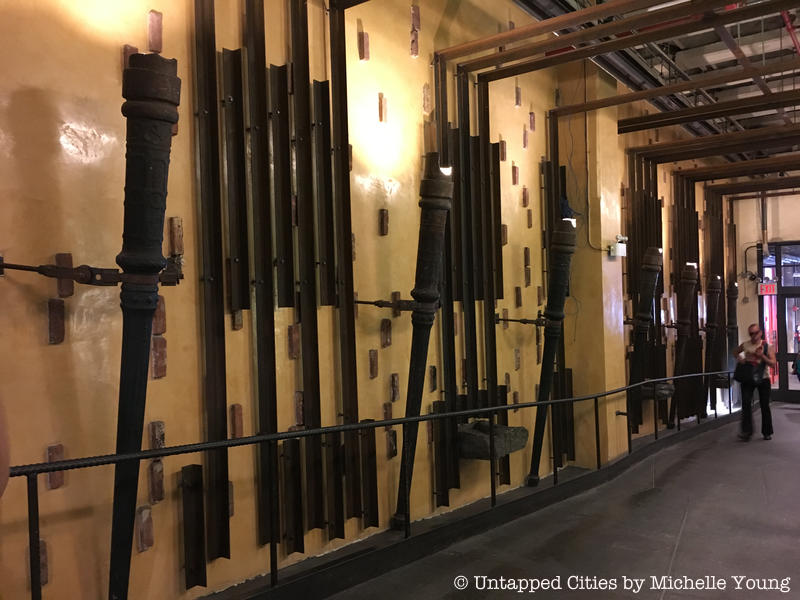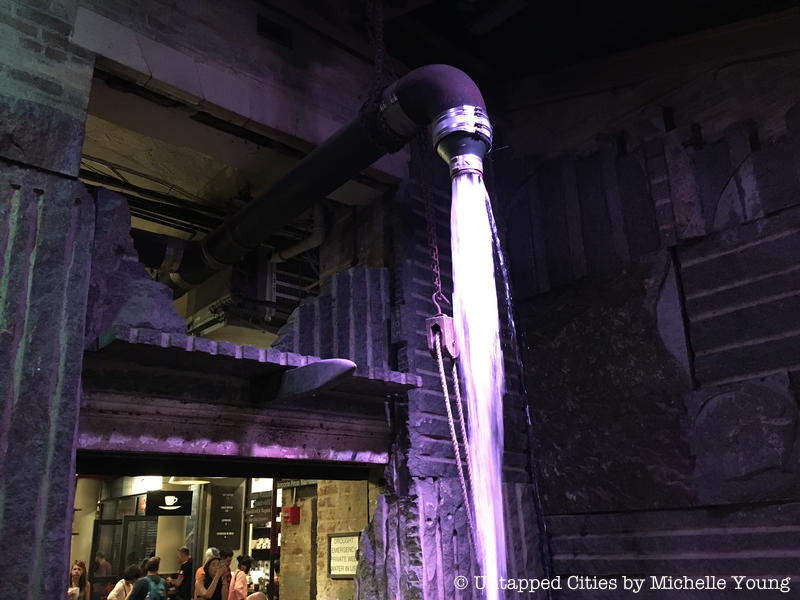1. Chelsea Market’s Design Pays Homage to its Industrial Past

Chelsea Market’s current design scheme pays tribute to its industrial past in a uniquely authentic fashion. Instead of utilizing a minimalist, modern design scheme, like so many shopping malls have, the Market’s designers created a space that reflects the market’s industrial roots and preserves its vintage feel. The lobby entrance from 9th Avenue contains an artistic display of industrial finds from cast iron lampposts to the .

The market’s past is especially visible in the Chelsea’s Pipe Fountain, which spews colorful illuminated water at all hours of the day and night. The fountain was made of discarded drill pieces and pipe fragments. The Market and its fountain are successful examples of urban recycling done right—instead of destroying all remnants of the past and then creating something new, pieces like the fountain preserve its legacy by using materials that already existed.
This was a deliberate gesture by Chelsea Market investor Irwin B. Cohen and building designers Vandeberg Architects. Cohen tells The New York Times his aim was “to show New York that this was like the excavation of a mining site.”
Chelsea Market is a place like no other, and it’s easy to get lost in its winding maze of stores, shops, patisseries, and so much more. If you’re lucky, you might run into a star on their way to the YouTube space, or a future billionaire on the way to her internship at Google. Even if you don’t, Market is a celebration unto itself, a symbol of New York’s recent stratospheric spike in growth and wealth and an example of consumerism and innovation at their most extravagant.
For more, check out the Untapped neighborhood guide to Chelsea and this article about 10 of NYC’s oldest historic restaurants, inns, and taverns.





